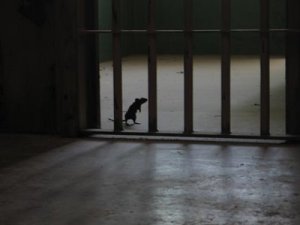Several key supporters of CAIC presented or submitted testimony to the New York State Assembly Standing Committee on Corrections and Assembly Standing Committee on Mental Health, which held a joint hearing on “Public Hearing on Mental Illness in Correctional Settings” in Albany on November 13, 2014. A collection of testimony appears below, and will be permanently archived on the Resources page.
Correctional Association of New York
Mental Health Alternatives to Solitary Confinement
New York Campaign for Alternatives to Isolated Confinement
New York City Jails Action Coalition
For more on the hearing, see the following news accounts:
http://abcnews.go.com/US/wireStory/ny-lawmakers-probe-care-mentally-ill-inmates-26878665
http://m.timesunion.com/local/article/Learning-to-treat-prisoners-with-signs-of-mental-5891924.php
 The head of the troubled New York City jail system said Thursday it’s critical to send mentally ill inmates to treatment programs instead of a lockup.
The head of the troubled New York City jail system said Thursday it’s critical to send mentally ill inmates to treatment programs instead of a lockup. William Blake is in solitary confinement at Elmira Correctional Facility in upstate New York. In 1987, while in county court on a drug charge, Blake, then 23, grabbed a gun from a sheriff’s deputy and, in a failed escape attempt, murdered one deputy and wounded another. He is now 50 years old, and is serving a sentence of 77 years to life. Blake is one of the few people in New York to be held in “administrative” rather than “disciplinary” segregation—meaning he’s considered a risk to prison safety and is in isolation more or less indefinitely, despite periodic pro forma reviews of his status. He is now in his 27th year of solitary confinement.
William Blake is in solitary confinement at Elmira Correctional Facility in upstate New York. In 1987, while in county court on a drug charge, Blake, then 23, grabbed a gun from a sheriff’s deputy and, in a failed escape attempt, murdered one deputy and wounded another. He is now 50 years old, and is serving a sentence of 77 years to life. Blake is one of the few people in New York to be held in “administrative” rather than “disciplinary” segregation—meaning he’s considered a risk to prison safety and is in isolation more or less indefinitely, despite periodic pro forma reviews of his status. He is now in his 27th year of solitary confinement.
Follow the #HALTsolitary Campaign